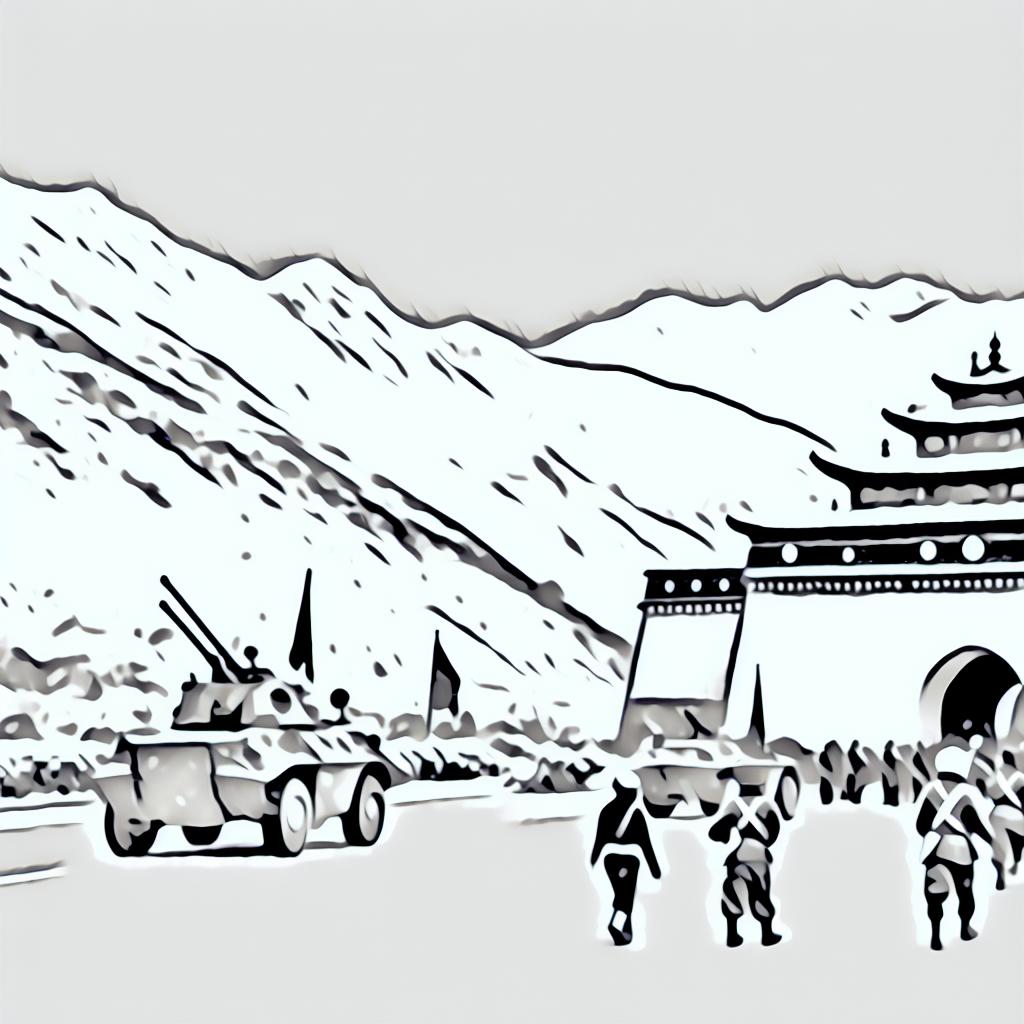Historical Context of the Chinese Invasion of Tibet
The Chinese invasion of Tibet in 1950 is a significant event in Asia’s post-World War II history. The invasion marked the beginning of a new era of Chinese territorial expansion under the leadership of the Communist Party of China. This was a period characterized by the reassertion of Chinese authority over regions historically influenced by China’s powers.
The Political Landscape in 1950
In 1950, Tibet occupied a complex political position on the international stage. While it had achieved de facto independence following the fall of the Qing Dynasty in 1912, Tibet was not recognized as a sovereign state by the international community. During this period, the Chinese government viewed Tibet as inherently part of its territory, citing historical claims rooted in the Mongol and Qing dynasties’ influence over Tibet. The regional government seated in Lhasa, however, sought to maintain its autonomous status and continued to operate under a theocratic system led by the Dalai Lama.
Initial Chinese Military Action
The Chinese military operation, initiated by the People’s Liberation Army (PLA), commenced in October 1950. The Chinese forces swiftly moved into the Kham region of Tibet, part of what is now known as the Tibet Autonomous Region. The PLA’s campaign was executed rapidly due to a combination of military superiority and strategic planning. The Tibetan forces, relying on a smaller and less equipped militia, could offer minimal resistance against the well-disciplined and numerically superior PLA. This swift military action laid the groundwork for the subsequent assimilation of Tibet into the People’s Republic of China.
The Impact on Tibet
The invasion and subsequent control had direct implications for the political and social structure of Tibet. By March 1951, the Chinese and Tibetan representatives had signed the Seventeen Point Agreement for the Peaceful Liberation of Tibet. This agreement was intended to ensure Tibetan autonomy under Chinese sovereignty. While the document promised to respect the region’s distinctive cultural and religious practices, it also facilitated a gradual increase in Chinese influence over Tibet’s administrative functions. The Chinese government’s policies began to disrupt traditional Tibetan governance, modify landownership patterns, and challenge societal norms that had been in place for centuries. The relocation of Chinese settlers into Tibet further intensified tensions, fundamentally altering the demographic and socio-economic fabric of the region.
Long-term Consequences
The events that followed the initial invasion had long-term and profound effects on Tibet. Politically, it saw the strengthening of Chinese administrative structures which gradually eroded the autonomy initially promised in the Seventeen Point Agreement. Culturally, the introduction of modern and secular education systems, alongside policies intended to integrate Tibetan society into the broader Chinese communist ideology, posed direct challenges to the religious and cultural traditions that formed the core of Tibetan identity.
Socially, the integration into China led to increased infrastructural development, including transportation and communication systems that connected Tibet more closely to the rest of China. While these developments brought certain material benefits, they also facilitated increased surveillance and control over the Tibetan population, restricting freedom of expression and curtailing religious practices.
Over the decades, the topic of Tibet has persisted as a contentious issue internationally. It not only invokes discussions around sovereignty and the right to self-determination but also brings to the forefront significant debates on human rights, religious freedom, and cultural preservation. The international community remains divided, with some nations and organizations supporting Tibetan autonomy movements while others adhere to policies recognizing Chinese sovereignty over the region as a territorial right.
For those interested in understanding this complex historical event in greater detail, a wealth of resources is accessible online. Various academic journals offer scholarly analyses, while historical accounts provide narratives from different perspectives on the Chinese invasion of Tibet in 1950 and its profound consequences. These resources serve to enrich knowledge, offering insights into the diverse narratives and viewpoints surrounding this pivotal moment in history.

